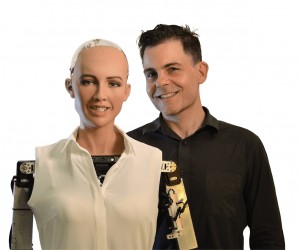In the world today, Klaus Schwab, a German engineer, economist and founder of the World Economic Forum, is a prophet. And, as it says in the good book, there are consequences of ignoring prophecy and prophets.
This is true of South Africa. Sadly though, it’s more to do with ignorance than deafness. The nuances of the trumpet call announcing the Fourth Industrial Revolution (FIR) at the World Economic Forum’s annual Africa meeting in May 2017 was missed by many, and only understood by a few.
So what’s the problem, and why is it happening?
Since time immemorial humanity has been on a road of discovery. This quest brought us out of caves as hunter gatherers and made us farmers and townsfolk, living quite a revolutionary life. But it did not end there. The first industrial revolution, in the late 18th century, introduced mechanisation.
The second industrial revolution, in the early 20th century, brought methods of mass production to the fore. The third industrial revolution occurred in mid-20th century with the introduction of computer technology. Now, combining mechanics, electronics, computer technology and the ingenuity of humanity, we have robots and artificial intelligence, with machines doing the work of humans.
Forget about the race to Mars. The Americans, Chinese and Japanese are in a race to create a fully functional android. Dr David Hanson leads the team of engineers and designers that created Sophia, the most advanced android to date. A combination of Alphabet’s Google Chrome voice recognition technology and other tools enable Sophia to process speech, chat with humans, and get smarter over time.
Professor Hiroshi Ishiguro of the Intelligent Robotics Laboratory has spent decades developing and refining various forms of humanoid robots. One looks exactly like he does. In China, a research team from the University of Science and Technology created Jia Jia, a super-lifelike robot goddess.
As much as humanlike robots may seem creepy, some roboticists are saying that these robots are the key to unlocking a future – a future in which humans and super intelligent computers coexist, work alongside each other and even develop relationships.
But, what does this mean for South Africans in real terms?
Bernard Marr of the Forbes Magazine sums it up very nicely. It’s estimated that between 35 and 50 percent of jobs that exist today are at risk of being lost to automation. Repetitive, blue collar type jobs might be first, but even professionals — including paralegals, diagnosticians, and customer service representatives — will be at risk.
Unless we raise awareness and an understanding of FIR, South Africa’s disastrous unemployment figures will increase by five million over the next ten years, negatively affecting approximately fifteen million people – over and above the 27 million currently in the poverty queues.
This isn’t science fiction. It’s happening now. Manufacturing was the first place we saw robots and automation eliminating human jobs, but it’s hard to think of an industry that will be left unaffected as robots and AI become more affordable and widespread. Necessity is the mother of all invention, and with labour unions becoming increasingly disruptive, it is time to envision a jobless future for many. Unless they change.
All these technological advances we are creating today — big data, artificial intelligence, robotics, the Internet of Things — represent a significant challenge to society. The more we automate and systematize, the more we see jobless growth. Taken to its logical extremes, we have the paradox of an exponentially growing number of products manufactured more and more efficiently but against rising unemployment, underemployment, falling real wages and stagnating living standards.
In South Africa, in the 53 years between 1960 and 2013, we witnessed a distinct shift in employment patterns. These data confirm the emergence of the Fourth Industrial Revolution. Mechanisation has already cost jobs in agriculture, forestry and fishing, mining and quarrying, manufacturing and construction. Overall, total employment decreased by 15.3% over this period.
A research team from the University of Science and Technology created Jia Jia, a super-lifelike robot goddess
The Fourth Industrial Revolution, here and evolving, represents the amalgamation of physical, digital, and biological technology that is totally changing our definitions of efficiency and has profoundly transformed how we are able to process, order and transmit information and apply it in various forms to our world. But, how will it affect jobs?
Change is coming, in a big way. Education is and will be the survival imperative of the future. Without proper education, in the right fields, unemployment will rise. Socioeconomic planners will need to refocus skills development.
Where does South Africa stand at present? Of the currently employed, 74% are at risk of losing their jobs in the longer term – because they have matric or less. The new economy demands post-matric qualifications.
Pali Lehohla, the Statistician General states that “Educational attainment increases access to decent jobs, while those with lower educational attainment are at risk of economic marginalisation, since they are less likely to participate in the labour force and are more likely to be without a job, even if they actively seek one.”
And the toughest job going forward? Human resource management!






